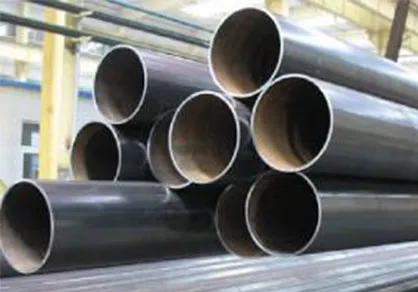-
Cangzhou Yulong Steel Co., Ltd.
-
Phone:
+86 13303177267 -
Email:
admin@ylsteelfittings.com
- English
- Arabic
- Italian
- Spanish
- Portuguese
- German
- kazakh
- Persian
- Greek
- French
- Russian
- Polish
- Thai
- Indonesian
- Vietnamese
- Zulu
- Korean
- Uzbek
- Hindi
- Serbian
- Malay
- Ukrainian
- Gujarati
- Haitian Creole
- hausa
- hawaiian
- Hebrew
- Miao
- Hungarian
- Icelandic
- igbo
- irish
- Japanese
- Javanese
- Kannada
- Khmer
- Rwandese
- Afrikaans
- Albanian
- Amharic
- Armenian
- Azerbaijani
- Basque
- Belarusian
- Bengali
- Bosnian
- Bulgarian
- Catalan
- Cebuano
- China
- China (Taiwan)
- Corsican
- Croatian
- Czech
- Danish
- Esperanto
- Estonian
- Finnish
- Frisian
- Galician
- Georgian
- Kurdish
- Kyrgyz
- Lao
- Latin
- Latvian
- Lithuanian
- Luxembourgish
- Macedonian
- Malgashi
- Malayalam
- Maltese
- Maori
- Marathi
- Mongolian
- Myanmar
- Nepali
- Norwegian
- Norwegian
- Occitan
- Pashto
- Dutch
- Punjabi
- Romanian
- Samoan
- Scottish Gaelic
- Sesotho
- Shona
- Sindhi
- Sinhala
- Slovak
- Slovenian
- Somali
- Sundanese
- Swahili
- Swedish
- Tagalog
- Tajik
- Tamil
- Tatar
- Telugu
- Turkish
- Turkmen
- Urdu
- Uighur
- Welsh
- Bantu
- Yiddish
- Yoruba

Aug . 29, 2024 23:31 Back to list
ANSI B16.5 Class 300 Flanges - Specifications and Standards
Understanding ANSI B16.5 Class 300 Flanges Specifications and Applications
The ANSI B16.5 standard is a critical component in the design and manufacturing of flanges in piping systems. This standard outlines the specifications for flanges made of various materials, including carbon steel, stainless steel, and alloy steel. Among the different classifications of flanges within this standard, Class 300 flanges play a vital role in numerous industrial applications. This article delves into the specifics of ANSI B16.5 Class 300 flanges, exploring their design, material properties, and typical applications.
Specifications
The ANSI B16.5 standard classifies flanges based on their pressure-temperature ratings, material types, and dimensions. Class 300 flanges are designed to withstand higher pressure levels compared to lower classes such as Class 150 or Class 250. Specifically, a Class 300 flange can handle pressures up to 740 psi at a temperature of 100°F. As the temperature increases, the pressure rating correspondingly decreases, necessitating careful consideration in applications involving elevated temperatures.
Design Features
Class 300 flanges are characterized by their robust design, which typically features a raised face (RF) style, ensuring a secure and leak-proof joint when bolted to another flange or fitting. The dimensions of Class 300 flanges follow a standardized approach, which makes them interchangeable with flanges of the same class and material. Standard dimensions, such as bolt circle diameter, number of bolt holes, and hole diameter, are all specified in the ANSI B16.5 standard. This interchangeability is crucial for maintenance and repair operations, allowing for flexibility in system designs.
ansi b16 5 class 300

Material Selection
Materials used for Class 300 flanges are chosen based on the operating environment and the types of fluids being transported. Common materials include carbon steel and stainless steel, each offering different advantages. Carbon steel flanges provide good strength and durability, making them suitable for various industries, including oil and gas, power generation, and water treatment. Stainless steel flanges, on the other hand, offer excellent corrosion resistance and are often used in chemical processing and pharmaceutical applications.
Applications
The versatility of ANSI B16.5 Class 300 flanges makes them prevalent in various industries. They are commonly found in power plants, where high-pressure steam and water systems require reliable connections. Chemical processing plants utilize these flanges to ensure safe and efficient transfer of corrosive materials. Additionally, the oil and gas industries frequently employ Class 300 flanges in pipeline systems, where high pressure and temperature variations are commonplace.
Conclusion
ANSI B16.5 Class 300 flanges represent a crucial component in the construction of robust piping systems across various sectors. With their distinctive pressure ratings, standardized designs, and material versatility, these flanges ensure the safety and efficiency of fluid transfer operations. Understanding the specifications and applications of Class 300 flanges not only aids in selecting the right flange for specific needs but also contributes to the overall integrity and reliability of industrial piping systems. Continued advancements in materials and manufacturing processes are likely to enhance the performance and application scope of ANSI B16.5 Class 300 flanges in the future.
Latest news
-
ANSI 150P SS304 SO FLANGE
NewsFeb.14,2025
-
ASTM A333GR6 STEEL PIPE
NewsJan.20,2025
-
ANSI B16.5 WELDING NECK FLANGE
NewsJan.15,2026
-
ANSI B16.5 SLIP-ON FLANGE
NewsApr.19,2024
-
SABS 1123 FLANGE
NewsJan.15,2025
-
DIN86044 PLATE FLANGE
NewsApr.19,2024
-
DIN2527 BLIND FLANGE
NewsApr.12,2024
-
JIS B2311 Butt-Welding Fittings LR/SR 45°/90° /180°Seamless/Weld
NewsApr.23,2024











